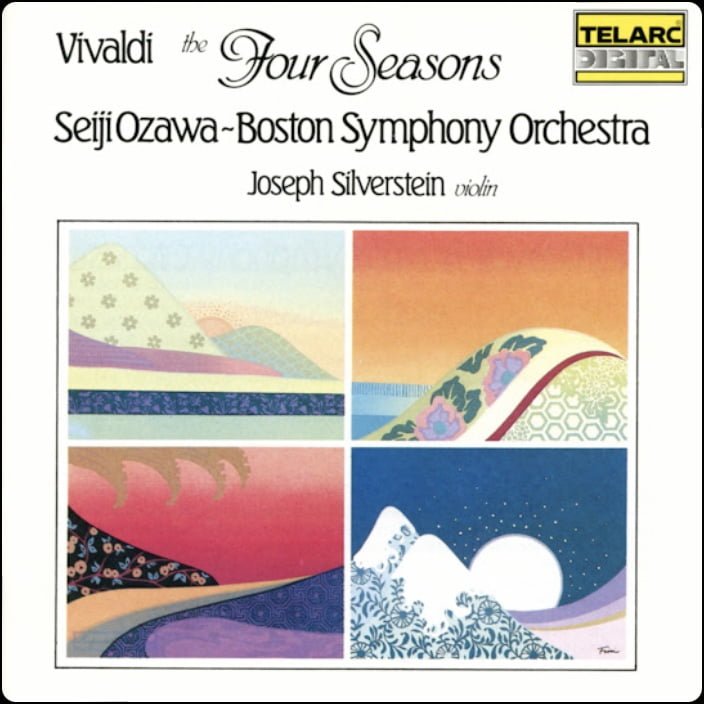Whygold’s Weekend
… under this motto I present you my music tip for the weekend.
Maybe one or the other discovers something new.
Consciously listening to music is, in my opinion, as important as reading a good book.
Today: Vivaldi – The Four Seasons
https://music.youtube.com/playlist?list=OLAK5uy_mEaIkpXtsUw6KZhVztPsX__g4hJD0lkGk
Antonio Lucio Vivaldi (b. March 4, 1678 in Venice; † July 28, 1741 in Vienna) was a Venetian and Italian composer, important violinist of the Baroque period, and Roman Catholic priest. Probably his best known works are
The four seasons
.
Antonio Vivaldi’s father Giovanni Battista Vivaldi came to Venice from Brescia at the age of ten, was a barber there at first like his father, and later became a professional violinist. His marriage to Camilla Calicchio, the daughter of a tailor, whom he married on June 11, 1676, produced ten children. The second born, the son Antonio (the eldest sister Gabriela Antonia had already died in infancy) was supposedly born during an earthquake and was emergency baptized (whether this was because of the disaster or whether his later health problems were already apparent here is unknown)[1].
In 1685 his father obtained a position as violinist at St. Mark’s Cathedral; he enjoyed a good reputation as a musician, had many connections within Venetian musical life as a member of the Cäcilienverein, and was mentioned in a guidebook as a violin virtuoso worth listening to. Antonio became the only professional musician among his siblings. He showed his musical talent on the violin at an early age and is said to have substituted for his father in the orchestra in his youth. He may have received music theory lessons from Giovanni Legrenzi, but he died in 1690, when Antonio Vivaldi was only twelve years old.
At the age of 15 Antonio received the tonsure and the first lower ordination, which, according to the custom of the time, did not mean a decision for the priesthood, but rather the goal of an elevated social status. However, the decision for the clerical state was made – more or less binding – when he received the first higher ordination as subdeacon at the age of 18. He completed his priestly training, not so much a study of theology as a professional training, in two nearby parishes.
In 1703 he received the priestly ordination – only one year later than the earliest possible according to canon law. He then became chaplain at the church of Santa Maria della Pietà and, at the request of Francesco Gasparini, violin teacher at the Ospedale della Pietà, an orphanage for girls attached to this church. He read masses there for a year and a half. Then he gave up the exercise of the priesthood forever, which he justified in a much later letter with health problems; he writes of strettezza di petto, that is, “tightness of the chest,” which may indicate angina or asthma.
As can be seen from the salary slips of the Ospedale della Pietà, after a short time he was employed not only as a violin teacher, but also as a teacher for violoncello and “viola all’inglese”(viola da gamba)[2]. From an anecdote it appears that he also played the harpsichord.
Because of the color of his hair inherited from his father Giambattista (referred to as Rossi or Rossetto), he was called Il Prete Rosso (“the red priest”).
Of Vivaldi’s nearly 500 concertos, 241 are preserved for violin as solo instrument. In second place come 39 bassoon concertos. The other concerti are for various woodwind instruments, 27 for violoncello, but also for more unusual instruments such as viola d’amore or mandolin. In one operatic aria he even used a salterio (Italian baroque dulcimer). In keeping with convention, all published concerto collections – with the exception of the six flute concertos op. 10 – call for one or more solo violins. Some 70 concertos are for two or more soloists, some of which, with their unusual combinations of instruments – in the concerto RV 555 the solo group is even expanded to 16 soloists – demonstrate Vivaldi’s distinctive sense of sound and love of experimentation.
(Source: Wikipedia)
Today a classic from the classical period.
Very nice recording, conducted by Seiji Ozawa.
Have fun listening to this album !
Your Chris Weigold
P.S.: Maybe you enjoy the listening pleasure together with a glass of wine from our “Orchester der Kulturen Edition”.

